Jeniland Omnibus #2
Jeniland Omnibus #2
Georgian Doll Shoes, Limners, and Real Life Meet-Ups
Hello! Thank you for your kind responses to my first Jeniland Omnibus. Here we go with what’s been happening in Jeniland lately!
If you missed my September Song of the Month all about Snooker the Dog and the Game and how to imagine colors on a black and white TV, you can listen here. Here’s a short reel I made to celebrate this new song. It stars my parents, grandparents, my sister, and me!
Georgian Doll Shoes
I’ve been back to the Victoria & Albert Museum’s Storehouse to see ten objects over two days. Most precious of all were these little blue leather doll shoes from the Georgian period. They were made in England not long after the war of 1812 and the death of Jane Austen in 1817. I like to imagine the kind of dolly who would have worn these! She was probably made of wood. My aim is to recreate them from the copious measurements and photographs I took.
Cut-and-Sew Panel Dolls
Speaking of dolls, did you ever have doll made from two printed pieces of fabric sewn together? Back in the early 1900s in Manchester, a textile firm called Calico Printers designed a lot of “cut-and-sew panel” dolls and the V&A holds their archive. This is my favorite because who doesn’t love a doll holding a doll?¹
A Knitter from the Past
You know how you work on something and you get this spooky sense that you’re nearly inhabiting the hands of someone who came before you? This is how I felt when I looked at the knitting samples of Elizabeth Hume from the 1800s. She made extensive textile samples of the knitting instructions in some of the earliest knitting instruction books. I nearly fell onto the floor of the V&A Study Centre when I came across her photo tucked into her linen sample book. Will I be researching more about Cousin Bess? Absolutely!
Limners
At the end of September, I traveled to the American Museum in Bath on assignment for Modern Daily Knitting. Though my focus was their vast textile collections, I fell in love with a style of painting done in New England from the 1600s-1800s by limners, itinerant portrait painters . ²
I was completely taken with this portrait of a little girl and her carved dog.
Mending and Loss
I recently received some beautiful objects from my friends Penny Baker and Lizzie Van Hasselt. The quilt fragment from Lizzie has wool batting and comes from the early 1900s. The doll’s chemise from Penny is made of crepe and has the sweetest mends. I love that someone thought a doll’s underdress was deserving of so many mending stitches. Where did the doll get holes in her chemise? Had she been climbing trees, as dolls sometimes do?³
While I was at the V&A, I had a conversation with one of the curators and he said something truly profound which I think I’ll always remember. He said, “What we’re doing at this museum is managing loss. Nothing lasts forever.”⁴ He was glad to see me carefully documenting so many objects and making plans to create new work based on them. He said that objects in museums are constantly degrading and, besides being stored properly, their best chance of survival is in the people who study, document, and celebrate them in new works. How beautiful.
Doll & Bear Hospital News!
Mirabelle and Marcello have been discharged from the hospital with a clean bill of health. Thank you to my old friend Roger for sending me such special family toys for my growing Doll Library and Museum.
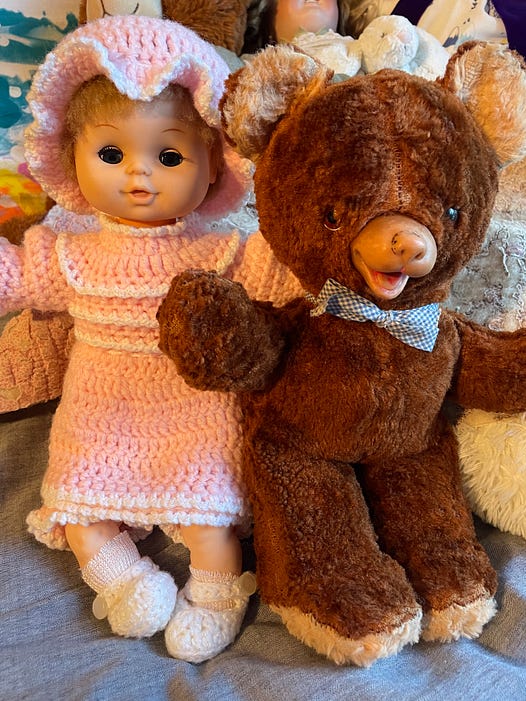 |
Ida, top dolly Girl Scout from the 1940s, is in my hospital for restringing, spa time, and a new pate. She has extraordinary hand-sewn clothes with hand-embroidered Girl Scout patches. I LOVE her! She was only £8 at the car boot fair in Lancashire. The woman who sold her to me was SO happy that I would be able to repair her. Being a doll and teddy bear nurse is a really joyful vocation.
Dolls Keep Asking for Knitwear
The demand for dolly knitwear is non-stop here. Dinah is the latest recipient of her own shrug made from cashmere and merino wool with picot edging. Only the best for these girls!⁵
Thanks for Stopping By!
Thank you for your encouragement and your kindness in commenting and writing to me here and around the web. I love that we can keep in touch. Your friendship makes my heart happy.
With kindness,
Jeni
In the USA, doll shapes were printed on feed, flour, sugar, or rice sacks. Aunt Jemima was one of the first ever sack-printed dolls in the USA. You can read all about the history of these printed dolls in the USA in the excellent book Rag Darlings by Gloria Nixon.
Limning means “to outline in clear, sharp detail:” The definition’s derivation points to the source of the American limners’ craft—the medieval manuscript illuminators. Members of the English Painter‐Stainers Guild, who shared ideas of the craft with the illuminators, arrived in the Colonies in the 1600’s. These skilled artisans became known as limners. To earn a living, at first, they painted anything. Not until after the Revolution did they find that signs and portraits were their primary business. (New York Times, May 1, 1977, “Return of the Limner.”
I’ve decided that I love looking at these two survivors so much that I’m going to stitch them together and put them in a shadow box frame on my wall.
I have a song called “Nothing Lasts Forever.”
Fun fact. Dinah was a prototype doll made by the Denys Fisher company – the makers of Spirograph one of my very favorite toys from childhood. Speaking of using nice yarn for doll clothes, when I was in France last week, I went to a yarn and sewing shop in Le Touquet. When I bought three balls of differently colored wool the shop owner asked what I was making. I said doll clothes and she said, “But I have 100% acrylic yarn if it’s just for dolls.” I thought, but I will enjoy feeling the wool and alpaca in my hands and the dolls will have heirloom clothes when someone just like me inherits them, sees them in a museum, or finds them in an auction. I can’t believe I had this conversation in French and English, but who can resist the word “poupée'“? She and I laughed a lot.
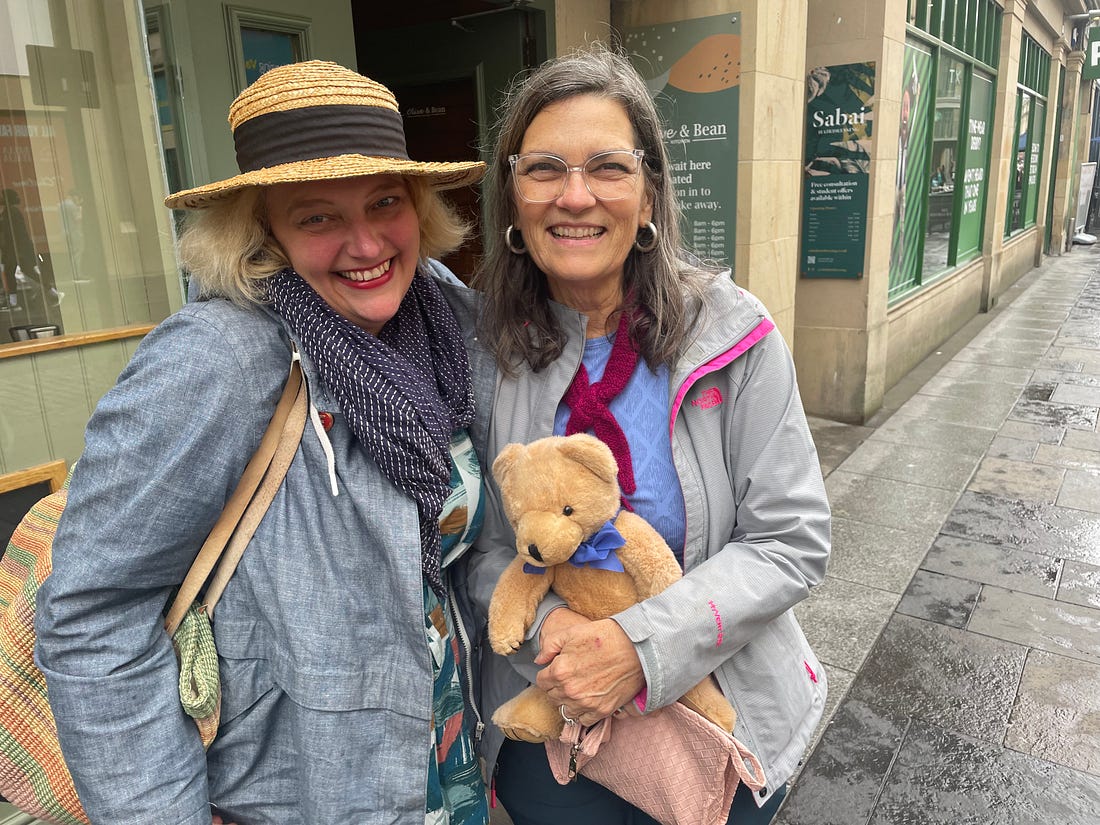 |
Other places you can find me on the web:
Tip Jar at Paypal or Ko-Fi. Thank you for supporting the new song, dolly rescue, bear rehabilitation, and loom re-stringing society!
Substack Notes where I post pictures and thoughts plus excerpts from other writers whose work I’m enjoying.
My shop where you can buy real albums that you can hold in your hand. Albums for the USA and Canada ship from the USA. Albums for the UK and Europe ship from the UK. Everywhere else, please write to me first! What chaos, the tariffs!
My website. And my tour page with dates currently being added.
Instagram and Facebook where I post my adventures almost daily.
My articles for Modern Daily Knitting.
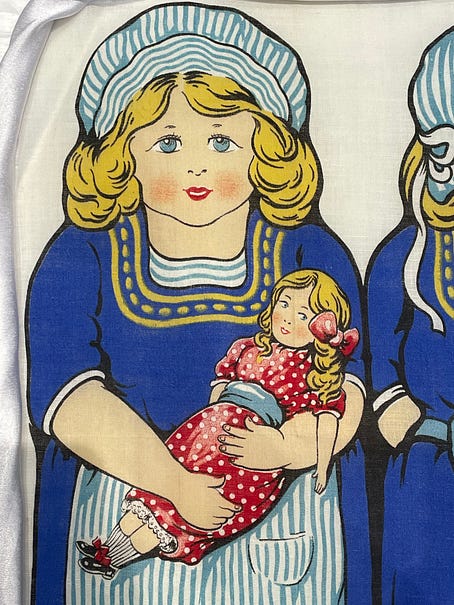
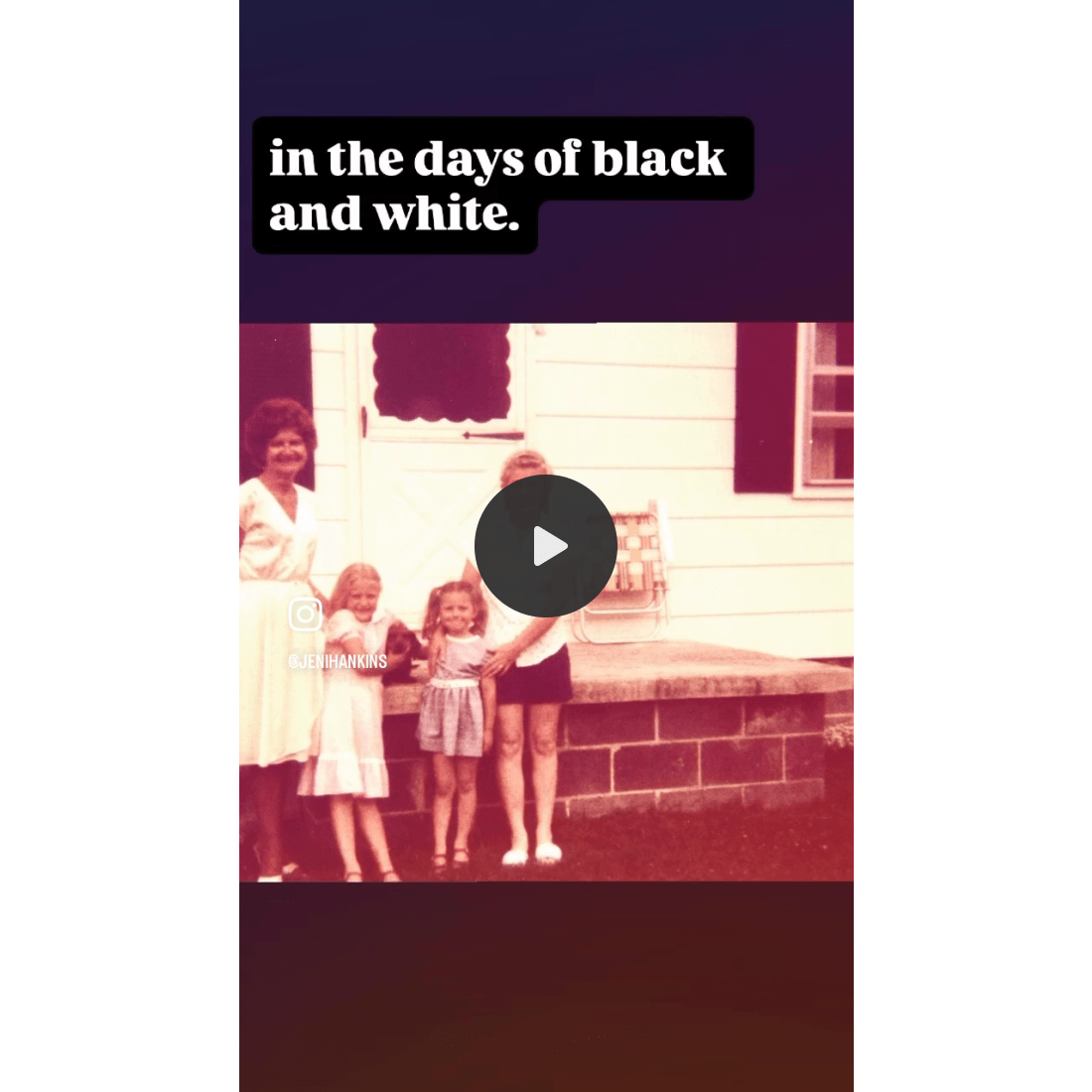
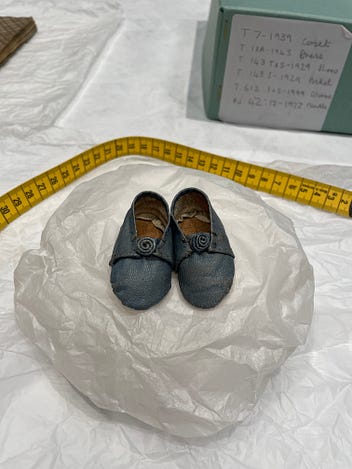
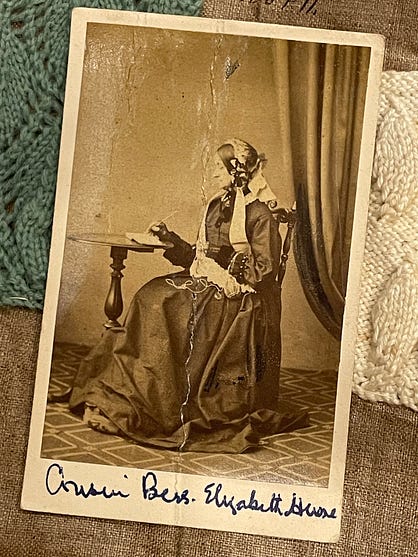
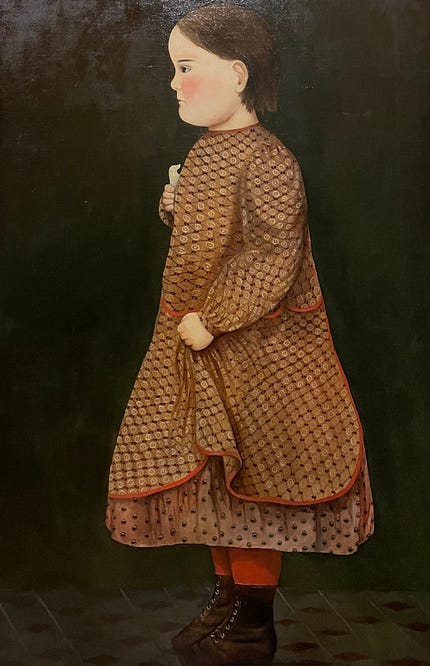
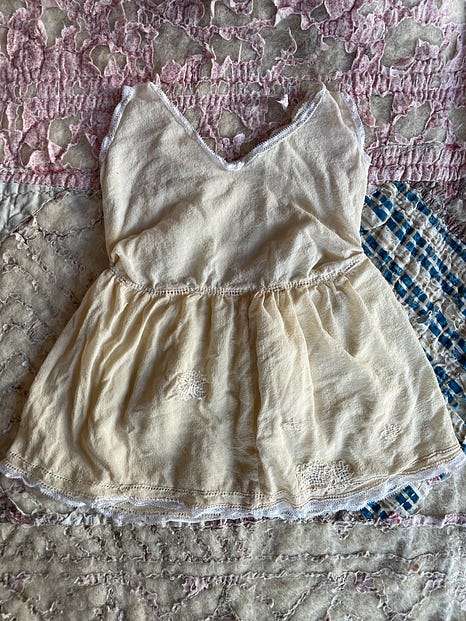
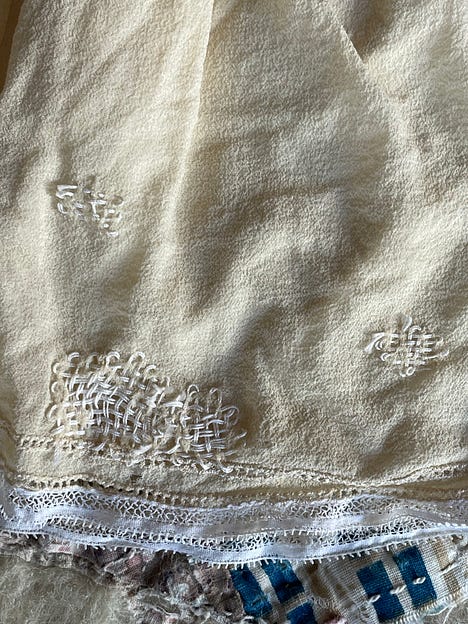
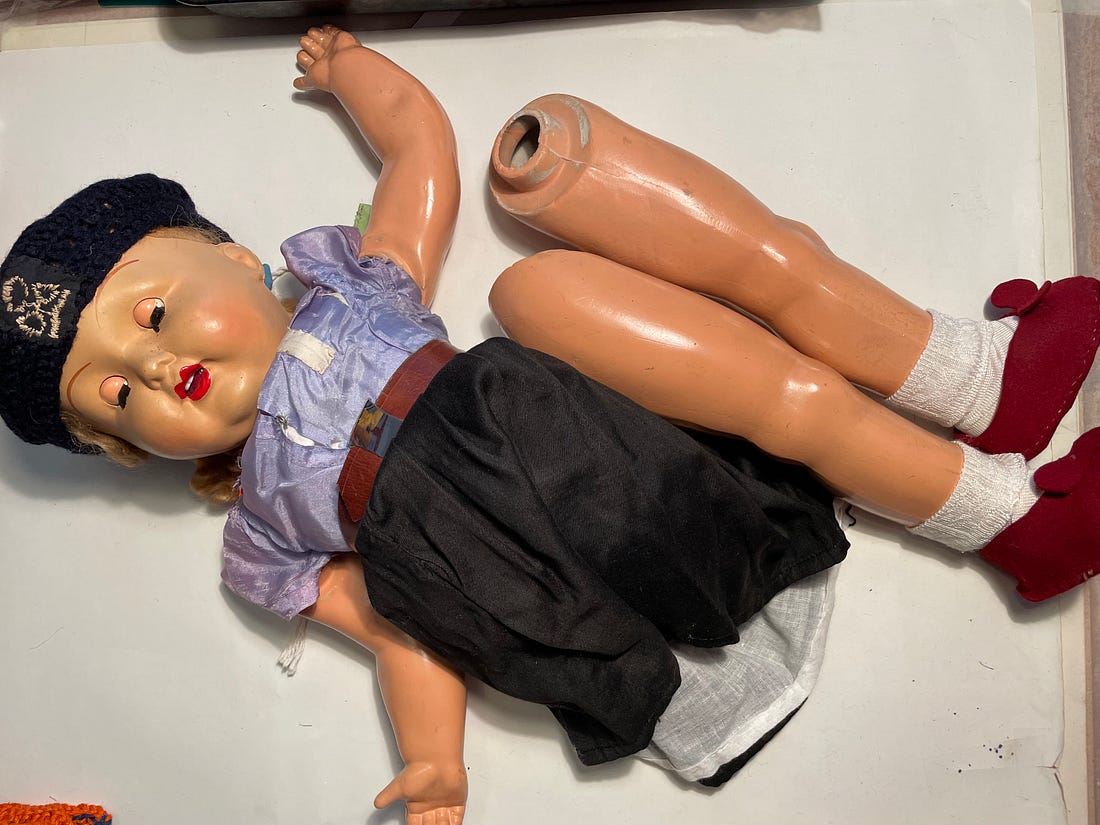
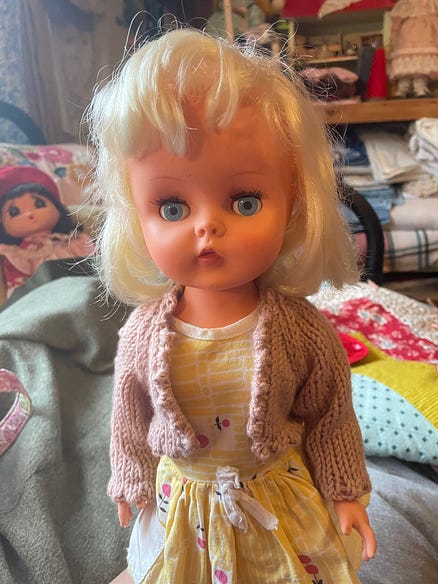
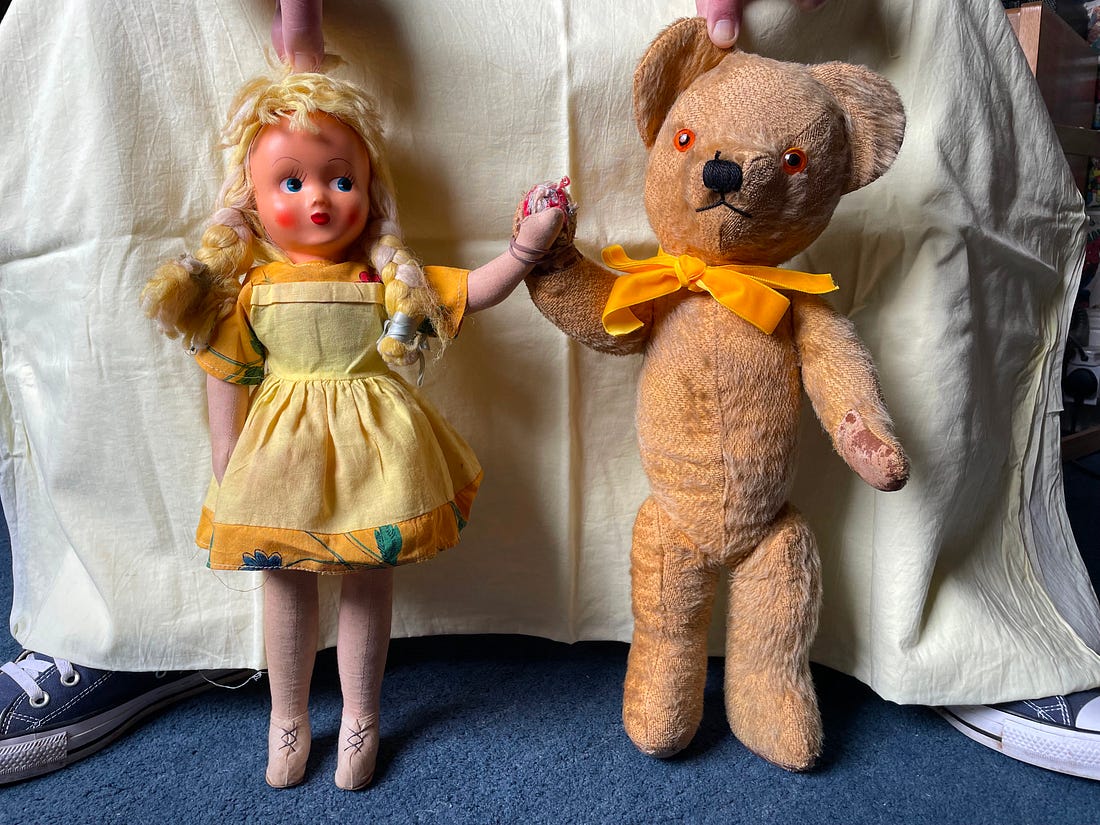
Comments
Post a Comment
Thank you for your comment! The lovely moderator will attend to it gently and promptly.